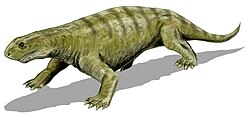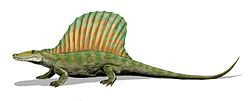| Nikkasauridae | |
|---|---|
| Scientific classification | |
| Kingdom: | Animalia |
| Phylum: | Chordata |
| Clade: | Synapsida |
| Clade: | Therapsida |
| Suborder: | † Biarmosuchia |
| Family: | † Nikkasauridae Ivakhnenko, 2000 |
| Genera | |
| |
Nikkasauridae is a family of biarmosuchian therapsids. It contains two genera: Nikkasaurus and Reiszia . [1] [2] [3]





